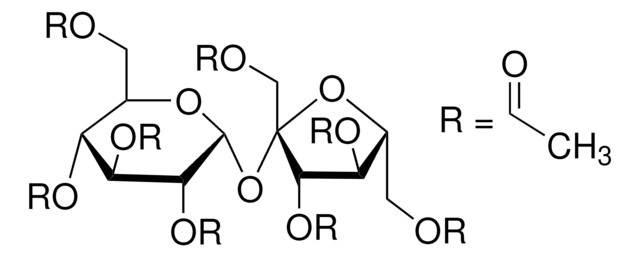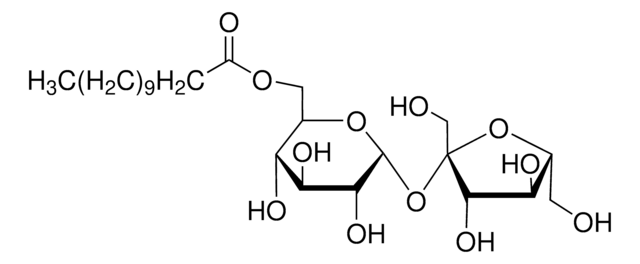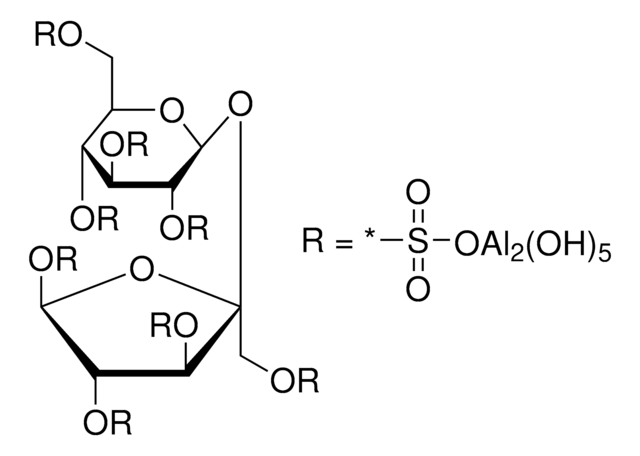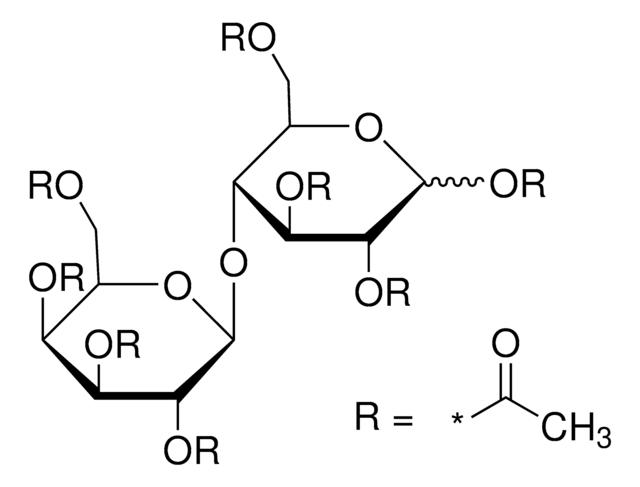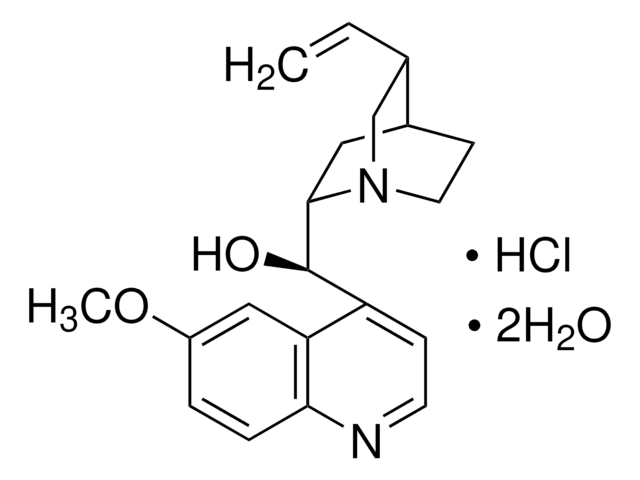W303801
Sucrose octaacetate
≥97%, FG
Synonym(s):
D-(+)-Sucrose octaacetate, Sucrose octaacetate
About This Item
Halal
Kosher
Recommended Products
biological source
synthetic
Quality Level
grade
FG
Halal
Kosher
reg. compliance
EU Regulation 1334/2008 & 872/2012
FDA 21 CFR 172.515
FDA 21 CFR 175.105
Assay
≥97%
optical activity
[α]20/D +59°, c = 2.5 in ethanol
bp
260 °C (lit.)
mp
82-85 °C (lit.)
application(s)
flavors and fragrances
Documentation
see Safety & Documentation for available documents
food allergen
no known allergens
Organoleptic
odorless
SMILES string
CC(=O)OC[C@H]1O[C@H](O[C@]2(COC(C)=O)O[C@H](COC(C)=O)[C@@H](OC(C)=O)[C@@H]2OC(C)=O)[C@H](OC(C)=O)[C@@H](OC(C)=O)[C@@H]1OC(C)=O
InChI
1S/C28H38O19/c1-12(29)37-9-20-22(40-15(4)32)24(42-17(6)34)25(43-18(7)35)27(45-20)47-28(11-39-14(3)31)26(44-19(8)36)23(41-16(5)33)21(46-28)10-38-13(2)30/h20-27H,9-11H2,1-8H3/t20-,21-,22-,23-,24+,25-,26+,27-,28+/m1/s1
InChI key
ZIJKGAXBCRWEOL-SAXBRCJISA-N
Looking for similar products? Visit Product Comparison Guide
General description
Application
- High-Degree Concentration Organic Solvent Forward Osmosis for Pharmaceutical Pre-Concentration.: Investigates the potential of organic solvent forward osmosis technologies in pharmaceutical applications, focusing on pre-concentration processes that may benefit from the stabilizing effects of sucrose octaacetate (Takada et al., 2024).
- Nutrient-conditioned intake stimulation does not require a distinctive flavor cue in rats.: Explores behavioral responses in rats to various flavors including sucrose octaacetate, suggesting implications for understanding human dietary choices and the development of food additives (Sclafani et al., 2020).
- Discrimination of Isointense Bitter Stimuli in a Beer Model System.: Examines the ability of individuals to distinguish between different bitter compounds, including sucrose octaacetate, in a controlled beer tasting model, which can influence food science and product development (Higgins and Hayes, 2020).
Storage Class Code
11 - Combustible Solids
WGK
WGK 2
Flash Point(F)
Not applicable
Flash Point(C)
Not applicable
Personal Protective Equipment
Choose from one of the most recent versions:
Already Own This Product?
Find documentation for the products that you have recently purchased in the Document Library.
Customers Also Viewed
Our team of scientists has experience in all areas of research including Life Science, Material Science, Chemical Synthesis, Chromatography, Analytical and many others.
Contact Technical Service